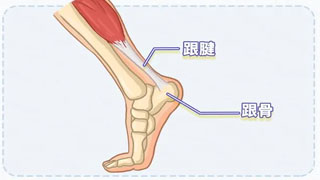
Foot stress fractures can be very painful, especially when the foot is under weight. When muscles become fatigued and unable to absorb impacts, such as when your feet come into contact with the sidewalk while running, stress fractures can occur. On the contrary, this impact will transfer to the bones, ultimately leading to tiny cracks called stress fractures.
In this article, we will learn about the treatment and recovery of foot stress fractures.
I think my foot is broken
We all said this sentence at dramatic moments, but soon realized that although it was painful, it didn't actually break.
However, sometimes minor injuries can ultimately lead to hairline fractures. At other times, obvious traumatic events will take you to the emergency room. It is important to know what to do if you think your foot is fractured and how to treat it after confirming the fracture.
Fractures and broken feet
Foot fracture is a medical term for foot fractures. However, the terms' fracture 'and' rupture 'can be used interchangeably. Of course, just like any part of the body, foot fractures also have different degrees and types, and each type of fracture requires a different treatment plan.
The number of fractures varies from year to year. The latest data shows that 11-15 million people report lower limb fractures every year. These fractures include buttocks, thighs and calves, ankles, feet and toes. Among them, 66% to 75% of fractures occur in the ankles, feet, and toes.
Foot fracture
Foot fractures are caused by various accidents, ranging from common to extreme.
Impact injury: Your feet may be crushed or fractured in a car accident, or due to simple events such as heavy objects falling on your feet.
Falling: Falling or jumping, even a short distance, can lead to a broken foot.
Tripping: A foot fracture may be caused by a minor mistake on a rocky path, tripping over a curb or step, or simply tripping over a rope or carpet. The root of the pain is enough to break the toe.
Overuse: Due to repeated or frequent use, small bones in the feet may experience fractures called stress fractures. These types of rest are more common among athletes such as runners, basketball players, or gymnasts.
Children are more prone to foot fractures than adults. This is due to the relationship between the strength of ligaments and tendons and the strength of bones. The ligaments and tendons in children's feet are stronger than bones. In adults, bones are stronger than ligaments and tendons. Due to the increased frequency of osteoporosis, the risk of foot fractures in the elderly increases.
Reasons for stress fractures of the foot
People with healthy bones may experience stress fractures due to repetitive or high-intensity activities, rapid increase in physical activity, or insufficient rest between workouts.
Sports with high risk of stress fractures include gymnastics, running, athletics, tennis, and basketball
If you already have bone conditions (such as osteoporosis) that make your bones more fragile and prone to fractures, the effects of normal daily activities may also lead to stress fractures.
Symptom: My feet
Is there a stress fracture?
The most common symptom of foot stress fractures is foot or ankle pain, which occurs slowly and becomes more severe during weight-bearing activities such as walking, running, or jumping.
Symptoms of foot stress fractures include:
Pain intensifies during weight-bearing activities
The pain will improve during rest
Swelling along the top of the foot and/or ankle
Tenderness in specific areas
blood stasis
Stress fractures can occur in any bone, but more than half of stress fractures occur in the lower leg, including the foot.
Official diagnosis of stress fractures
If you have symptoms of stress fractures, please consult your healthcare provider, discuss your health history, and undergo imaging examinations. The gold standard for diagnosing stress fractures is magnetic resonance imaging (MRI). However, some healthcare providers may also use radiography, ultrasound, computed tomography (CT), and bone scans.
Foot stress fracture
How long does it take to heal?
According to the American College of Orthopaedic Surgeons, most stress fractures take approximately six to eight weeks to heal.
However, the healing time varies depending on individual factors, such as:
Location of stress fractures, activity level, compliance with activity modifications, gender, age, bone density
Healthcare providers should be able to provide you with a personalized rehabilitation schedule based on your imaging and other variables.
Start targeting foot symptoms
Perform stress fracture treatment
If you are diagnosed with a foot stress fracture, we will provide treatment based on the risk level and location of the fracture.
Low risk foot stress fracture
Sometimes, healthcare providers may start with conservative treatment to allow stress fractures to heal independently without surgery. Conservative treatment may include:
Acute period rest, ice compress, compression, elevation (RICE) method
Non steroidal anti-inflammatory (NSAID) drugs, such as Advil or Meilin (ibuprofen) and Aleve (naproxen sodium)
Use crutches or knee scooters for a short period of time without carrying any weight until the initial pain subsides
Adjust activities for six to eight weeks to reduce foot pressure
Protective shoes, such as hard soled shoes, wooden soled sandals, protective gear, or boots
Physical therapy is used for physical rehabilitation programs, restoration of normal activities, and treatment methods
Occupational therapy, used for training auxiliary equipment and methods to change your environment, mobility, and daily life activities within new limits
High risk foot stress fracture
High risk foot stress fractures can be treated through more aggressive measures, sometimes including surgery. High risk stress fractures include those that do not respond to conservative treatment or progress to complete fractures.
Specific locations with high load and low blood flow in the feet and ankles are also considered high-risk:
Inner ankle: a bone block on the inner side of the ankle.
Talus: The ankle bone located at the top and back of the foot. This is where two small leg bones (tibia and fibula) connect to the foot.
Tarsal bone: a small bone in the midfoot that plays an important role in maintaining the arch of the foot.
Proximal fifth metatarsal bone: one of the five long and thin bones that connect from the bottom of the ankle to the bottom of the toe. Especially the fifth metatarsal bone, which is located at the outer edge of the foot, is prone to injury.
Big toe sesamoid bone: Two small circular bones located on the underside of the big toe joint.
The treatment of high-risk stress fractures is more likely to progress to surgery, as these fractures may not heal independently. Treatment usually includes:
Use boots or knee scooters for non load fixation
Long term distance from exercise
Reasonably and cautiously resuming sports activities in an orderly manner
Possible surgery
Stress fracture of the foot
Activity support
Most of the time, your feet may walk due to stress fractures; It is only recommended that you limit high-pressure weight-bearing activities, such as running, and take painkillers.
Based on the severity of the fracture, the location of the fracture, and other factors, your healthcare provider may recommend that you wear boots.
Sometimes, healthcare providers recommend inflatable boots with compressed air chambers to provide cushioning for your feet and reduce the impact of walking. You can walk around wearing boots, but you should not try running or jumping.
When to resume normal physical activity
When your healthcare provider recommends, resume regular physical activity. For most people, it takes about six to eight weeks after diagnosis. However, it may take up to 4 weeks at the earliest and up to 12 weeks at the longest.
When you resume regular physical activity, you can take some measures to prevent future stress fractures. This includes
Gradually increase physical activity/exercise.
Rest between physical activity and exercise.
Incorporate cross training into your exercise plan.
Use shock-absorbing pads in shoes.
Consider supplementing calcium and vitamin D.
If you feel pain or swelling, please stop moving and wait for it to disappear before resuming.
Before taking any vitamins or supplements, please consult your healthcare provider and discuss alternative methods for preventing future stress fractures.
summary
Foot stress fractures may cause pain, tenderness, swelling, soreness, and sometimes even bruising. The pain caused by stress fractures in the foot usually becomes more severe during weight-bearing activities. Conservative treatment for foot stress fractures typically lasts for six to eight weeks, including pain relief and adjustment of movement. High risk foot stress fractures may require inflatable boots, and in some cases even surgery, although this is less common.


